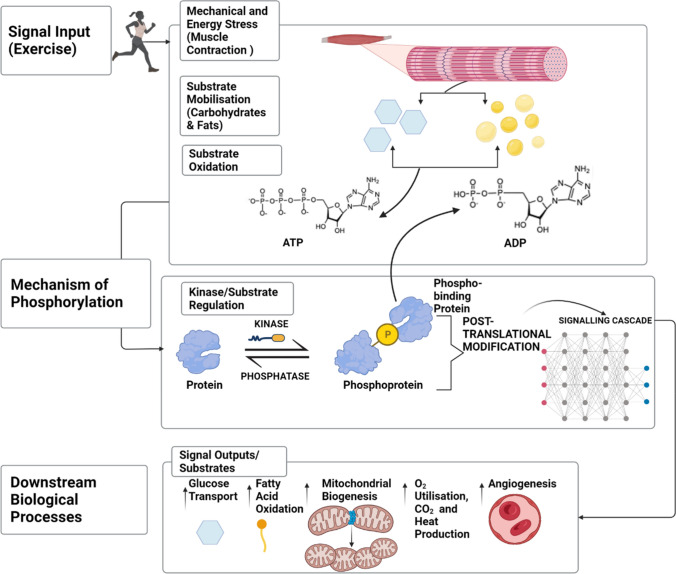Fig. 1.
Exercise signal transduction networks and the mechanisms by which protein kinases initiate substrate phosphorylation and regulate downstream biological processes. The post-translational modification (PTM) of protein phosphorylation involves protein kinases, protein phosphatases and their respective substrate proteins. Phosphorylation is activated by cellular perturbations, such as skeletal muscle contraction and energy stress in response to exercise (i.e. signal input), which promotes energy substrate turnover and phosphorylation of target substrates capable of triggering a cascade of downstream signalling events. Consequently, substrate proteins receive a phosphate group via adenosine triphosphate (ATP) hydrolysis owing to enzymatic activity of the kinase. Phosphorylation is a reversible PTM owing to dual activity of kinases and phosphatases, which can allow them to serve as ‘molecular switches’ for their respective substrates’ phosphorylation and regulation of downstream biological processes. Created with BioRender.com

